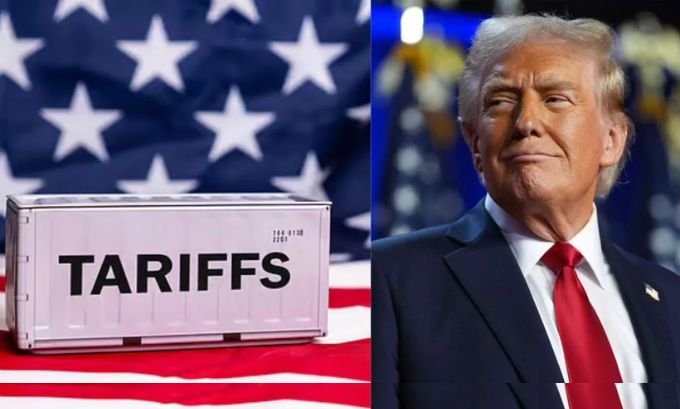Recent announcements from Washington have sent ripples through boardrooms across America. New tariff policies are reshaping how companies source materials, price products, and plan for the future. Whether you’re a small manufacturer or a retail giant, understanding these changes could make the difference between thriving and merely surviving.
Tariffs affect more than just import costs. They influence supply chains, consumer prices, and competitive positioning. The current landscape presents both challenges and opportunities for businesses willing to adapt their strategies.
This post breaks down the latest US tariff news, developments, examines their real-world impact on different industries, and provides actionable strategies to help your business navigate this shifting terrain.
Table of Contents
Understanding the Current Tariff Landscape
The United States has implemented significant changes to its tariff structure over the past few years. These modifications target specific countries and product categories, creating a complex web of trade restrictions and incentives.
Key sectors experiencing major tariff adjustments include:
- Steel and aluminum imports – facing additional duties ranging from 10% to 25%
- Consumer electronics – with varying rates depending on country of origin
- Textiles and apparel – subject to both traditional and new trade barriers
- Agricultural products – experiencing retaliatory tariffs from trading partners
How Tariffs Actually Work
Tariffs function as taxes on imported goods, paid by the importing company rather than the foreign manufacturer. This cost typically gets passed along to consumers through higher prices, though some businesses absorb the expense to remain competitive.
The immediate effect hits your bottom line through increased procurement costs. However, secondary effects often prove more significant. Supply chain disruptions force companies to find new suppliers, renegotiate contracts, and sometimes relocate manufacturing operations.
Industry-Specific Impacts
Different sectors face unique challenges and opportunities under the new tariff regime. Understanding your industry’s specific situation helps inform strategic decisions.
Manufacturing Companies
Manufacturers using imported raw materials or components face direct cost increases. Steel fabricators, for instance, have seen input costs rise substantially. Some companies report material cost increases of 15-30%, forcing them to raise prices or accept reduced margins.
Smart manufacturers are diversifying their supplier base, exploring domestic alternatives, and investing in inventory management systems to better predict cost fluctuations.

Retail Businesses
Retailers importing finished goods must decide whether to absorb tariff costs or pass them to consumers. This decision depends on market position, competition levels, and customer price sensitivity.
Many retailers are shortening their supply chains, working directly with manufacturers, and exploring private label opportunities to maintain margins while controlling quality.
Technology Companies
The tech sector faces particularly complex challenges due to the global nature of electronics manufacturing. Components often cross multiple borders during production, creating layered tariff exposure.
Forward-thinking tech companies are redesigning products to use fewer affected components, establishing manufacturing partnerships in different countries, and accelerating automation initiatives to reduce labor dependency.
Strategies for Tariff Management
Successfully navigating tariff changes requires proactive planning and strategic thinking. Companies that prepare early often discover competitive advantages their slower-moving competitors miss.
Supply Chain Diversification
Relying on a single country or supplier increases tariff risk. Building relationships with suppliers across multiple regions provides flexibility when trade policies change.
Start by mapping your current supply chain, identifying critical components, and researching alternative sources. Consider factors beyond just price, including quality standards, delivery reliability, and political stability.

Domestic Sourcing Opportunities
Rising import costs make domestic suppliers more competitive. While US-made materials or components might cost more initially, tariff protection can level the playing field.
Evaluate domestic suppliers you previously dismissed due to cost concerns. Factor in total cost of ownership, including shipping, customs processing, and inventory carrying costs.
Strategic Inventory Management
Smart inventory planning helps buffer against tariff fluctuations. Building strategic stockpiles before tariff increases take effect can maintain margins during transition periods.
However, avoid over-investing in inventory. Tariffs can change quickly, and excess stock ties up capital while risking obsolescence.
Price Strategy Adjustments
Tariff costs don’t automatically translate to equivalent price increases. Market dynamics, competition, and customer relationships all influence pricing decisions.
Consider graduated price increases rather than immediate full-cost pass-through. Test market acceptance with smaller increases, communicate value propositions clearly, and explore product bundling or service additions to justify higher prices.
Planning for Future Changes
Tariff policies remain fluid, influenced by political developments, international negotiations, and economic conditions. Building flexibility into your business model helps adapt to future changes.
Scenario Planning
Develop multiple business scenarios based on different tariff outcomes. Consider best-case, worst-case, and most-likely situations. Having predetermined response plans speeds decision-making when changes occur.
Trade Agreement Monitoring
Stay informed about ongoing trade negotiations and pending legislation. Professional associations, trade publications, and government resources provide valuable updates on policy developments.
Technology Investment
Advanced supply chain management systems, predictive analytics, and automated sourcing tools help companies respond quickly to changing conditions. These investments pay dividends during volatile periods.
Making Tariffs Work for Your Business
While tariffs create challenges, they also present opportunities for prepared companies. Domestic manufacturers gain protection from foreign competition. Service providers benefit from reshoring trends. Innovative companies discover new market niches.
The key lies in viewing tariffs as one factor in a complex business environment rather than an insurmountable obstacle. Companies that adapt their strategies, diversify their operations, and maintain flexibility often emerge stronger from trade disruptions.
Success requires understanding your specific situation, developing multiple options, and remaining agile as conditions change. The businesses thriving through current tariff changes share common characteristics: they plan ahead, diversify their approaches, and focus on long-term value creation rather than short-term cost minimization.
Stay informed, stay flexible, and remember that every challenge creates opportunities for those willing to innovate their approach to business.

